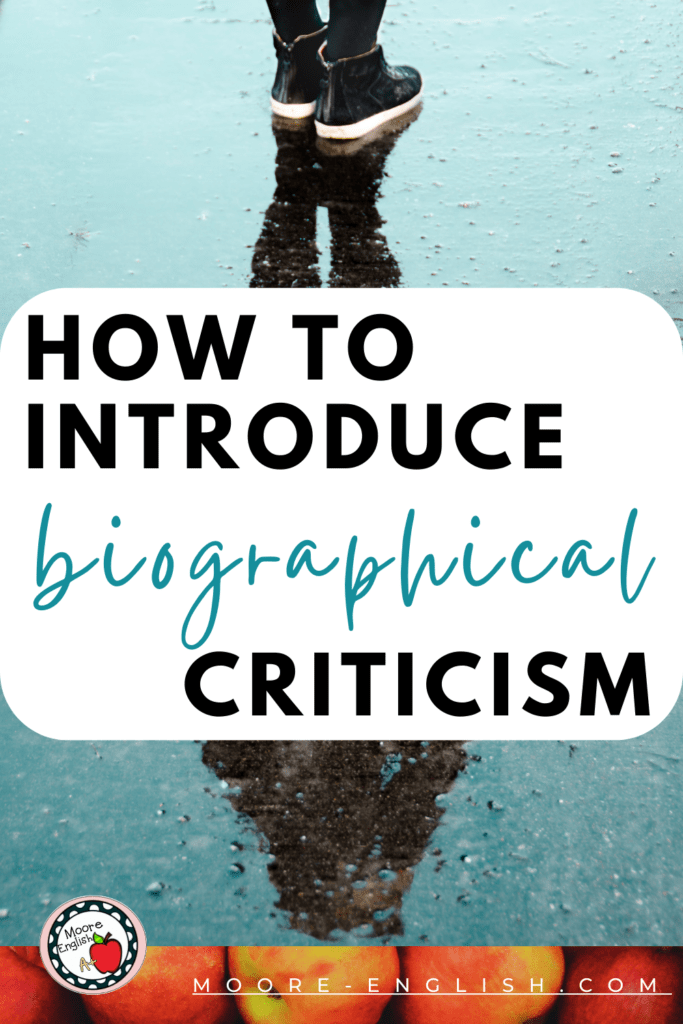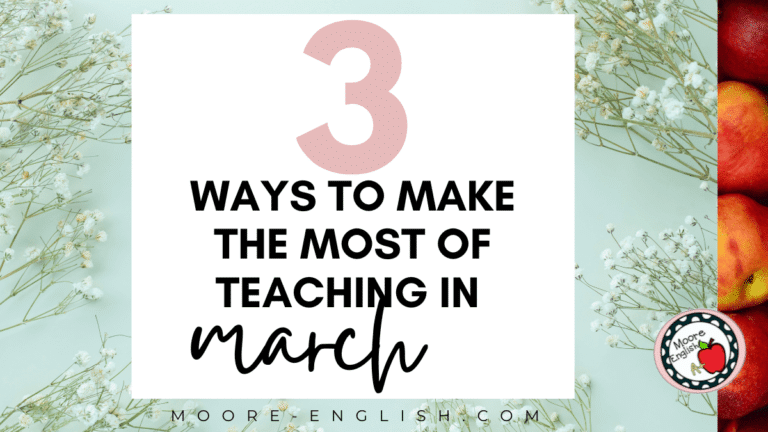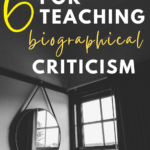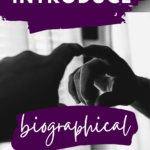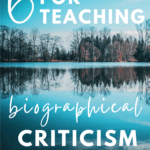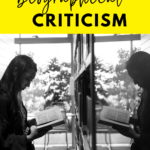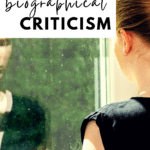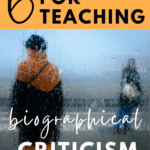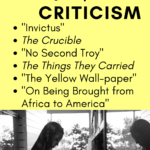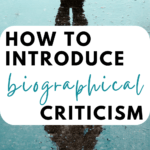When introducing literary criticism, biographical criticism is often where I begin. Over the years, students have often engaged in biographical criticism without knowing its name. For example, this year, one of my students read the graphic novel Dragon Hoops, which draws heavily on its author’s life experiences. During his Book Cover Design presentation, the student shared information about how the author’s life relates to the book.
To guide students through biographical criticism, we often focus on these questions:
- How does the author’s life relate to the story?
- Are the characters similar to or different from the author?
- Which of the author’s experiences appear in the text? To what effect?
- How does knowledge about an author’s life affect a reader’s understanding of the text?
This post this post may contain affiliate links. Please read the Terms of Use.
Introducing Biographical Criticism
I always begin biographical criticism with “Invictus” by William Ernest Henley (read it here). After reading and annotating the poem, I ask students to make predictions about the poem’s inspiration. What might Henley have experienced to inspire this poem? Overwhelmingly, students infer that he survived a war. Students never guess that Henley lost a leg to complications from a long illness. Once students have this information, I ask them how their understanding of the poem changes.
From this point, I directly introduce the term biographical criticism. Then, we quickly make a t-chart discussing the benefits and consequences of this critical lens. On the one hand, biographical criticism can provide readers with greater insight into a text. On the other hand, it may also limit a reader’s understanding of a text or prevent readers from making connections to a text.
Research as Part of Biographical Criticism
When we’re teaching and studying fiction, we don’t always think about research. However, conducting research complements biographical criticism nicely. To get a full picture of how an author’s life influenced their work, students have to know a little bit about an author. Sometimes textbooks provide a brief overview of an author’s life, but that picture may not be complete or specific enough. To help students keep track of their research, I often give students these free scaffolded note pages. For these reasons, these two poems provide students with a chance to do the research that enables biographical criticism.
First, “On Being Brought from Africa to America” by Phillis Wheatley provides students with an opportunity to learn a little more about one of America’s earliest Black women poets. To apply biographical criticism to this poem, students need information about Wheatley’s life, including her religious beliefs. Plus, this poem is short and fairly straightforward, so it’s a good place to begin practicing biographical criticism. Ask students to hold on to the poem so they can revisit the text when the begin feminist criticism. Read it here.
Similarly, “No Second Troy” by William Butler Yeats invites biographical and historical criticism. First, it helps if students understand the allusions to the Trojan War and Helen of Troy. Additionally, the poem also reflects Yeats’ own troubled relationship with Maud Gonne, which takes place against the background of the Irish Revolutionary Period. To appreciate all the layers of the poem requires biographical criticism. Read it here.
Longer Works
As students begin to master biographical criticism, it’s time for them to try longer and more complex texts.
First, “The Yellow Wall-paper” by Charlotte Perkins Gilman is an ideal text for biographical criticism. On the one hand, this is a high-interest piece for students, so they will be engaged. Additionally, reading Gilman’s “Why I Wrote ‘The Yellow Wall-paper?’” provides another perspective on tha main character and her struggles. Read the short story here.
Similarly, Arthur Miller’s own experiences under McCarthyism color The Crucible. Because The Crucible lends itself to so many different critical lenses, this can be a great text to read in class. For biographical criticism, students can learn a great deal from “Why I Wrote The Crucible.” Check out my favorite activities for teaching The Crucible.
Finally, The Things They Carried by Tim O’Brien reflects the author’s own experiences in the Vietnam War. O’Brien even comments on the relationship between his lived experiences and what he calls “story truth” in chapters like “Good Form.” While this is a longer novel, its action and honesty engage students, and the text lends itself to a variety of critical lenses. Grab your copy here!
Further Reading
Since literary criticism is one of my passions, I’ve written quite a bit about it. Check out these related posts and resources:
- 5 Reasons to Include Literary Criticism, and 5 Ways to Make it Happen
- How to Introduce Deconstructionist Literary Criticism
- Teaching at the Intersection of History and Literature
- 8 Ways to Bring Creativity into the Classroom
- 40 Texts for Teaching Literary Criticism
- Deconstructionist Criticism Bundle
- All Literary Criticism Resources
- Introducing Literary Criticism
- Feminist Criticism Bundle
- Historical Criticism

